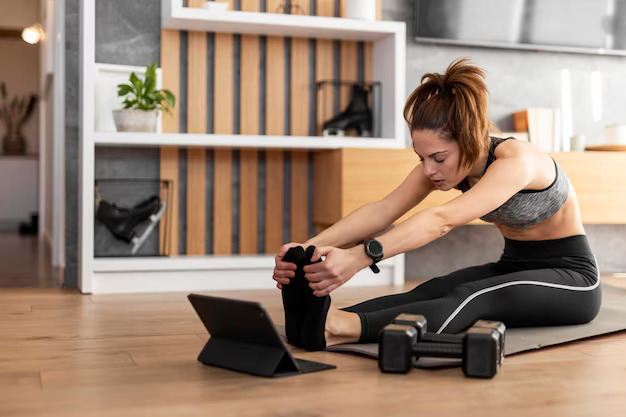As gyms and fitness facilities across the U.S. prepare to open, many people are still wondering: Is it a good idea to go back so soon?
Dr. John-Paul Rue, an orthopedic surgeon and sports medicine doctor at Mercy Medical Center, says he considers it to be “generally safe” — provided that proper guidelines are followed.
But there are some key factors to consider. If you find it difficult to wear a mask while working out (which some gyms will require), for example, it’s probably best to hold off.
“It may be harder for someone with an underlying medical condition, such as asthma, because wearing a mask restricts the movement of air in and out of our lungs,
Luckily, transforming a corner of your home into a gym can be incredibly simple and cheap. Below, fitness trainers share their favorite exercise equipment to use at home:
(Note: These workouts are not for everyone. If you have a physical condition, health concerns or are currently pregnant, consult with your doctor first.)
A yoga or exercise mat is the most important item you need.
“It sets the stage for where you’ll be working out and makes moving on the ground easier,” Geoff Tripp, head of fitness science at Trainiac, a personal training app, tells
If you prefer extra support and comfort, choose a mat that is thicker and has more cushion.
This is a versatile and inexpensive piece of equipment that can be used to warm up your body before working out, or as a way to cool down tired muscles after a long session, Peter Athans, a trainer and director of coach development at Noom, a health app, tells CNBC Make It.
Studies have shown that foam-rolling after a high-intensity workout can help improve the range of motion and muscle performance.
“I love foam rollers because they increase circulation in my muscles and connective tissue, which helps reduce any soreness,” says Athans.
Rolling calves:
- Start by sitting with your legs extended.
- Position the roller beneath your right calf and lift your body to rest your weight on the roller.
- Slowly roll your calf back and forth on the roller, starting from the knee to ankle.
- Do this for 20 to 30 seconds.
- Switch legs and repeat steps.
- Most people are more familiar with dumbbells, but kettlebells (which look like small cannonballs with triangular handles) can be used to mix up your strength-training sessions.
- Athans uses a kettlebell for cardiovascular endurance. “It brings added weight plus dynamic function to any workout,” he says. “Kettlebells also target every muscle group, take up minimal space and are easy to store.”
- Kettlebell swings:
- Stand with your feet shoulder-width apart. Place the kettlebell about one foot in front of you.
- Gently bend your knees, hinge forward at your hips, push your glutes back and grab the handles with both hands.
- Swing the kettlebell down between your legs with your arms extended.
- Stand up and thrust your hips forward, squeezing your glutes and letting your arms swing forward to chest-height (but not higher than your shoulders).
- Get back into the quarter-squat position. The kettlebell should be between the legs with both arms extended.
- Pull the weight back down, hinge at your hips and immediately move into the next rep.
- Repeat for desired number of reps.



